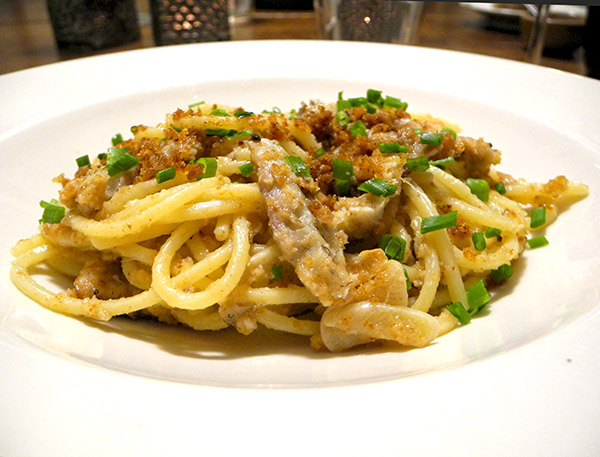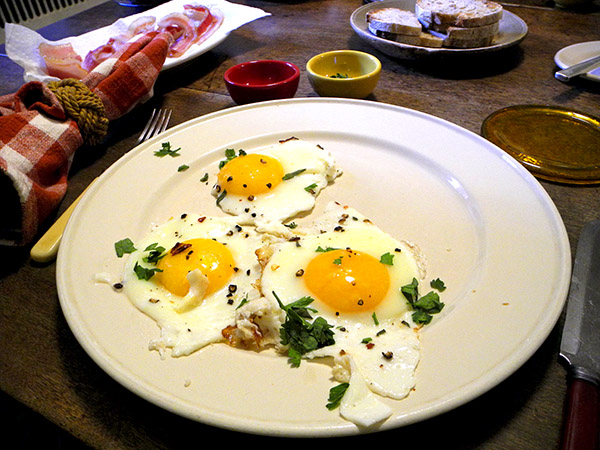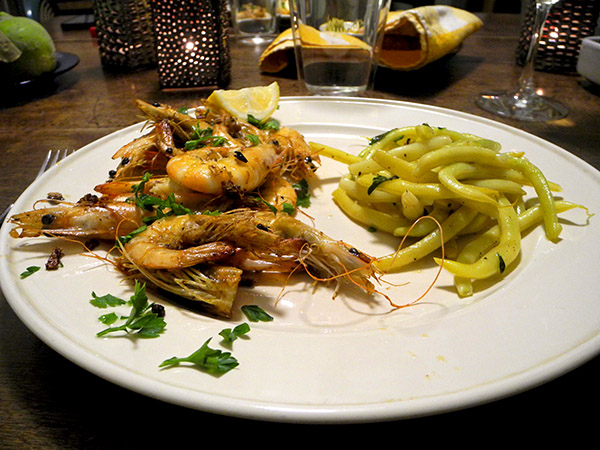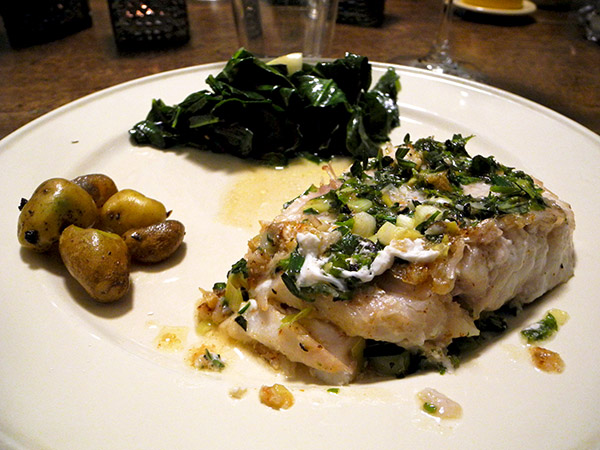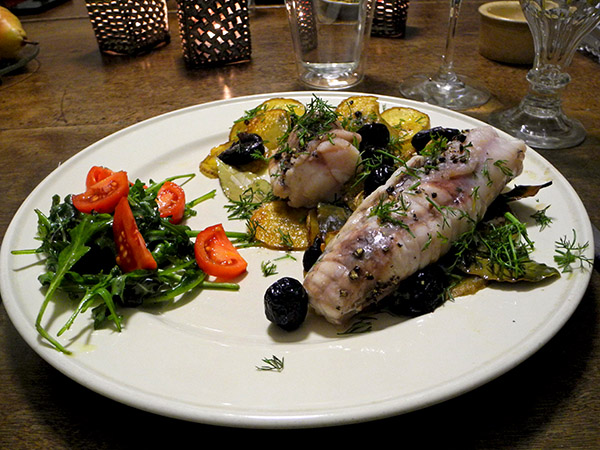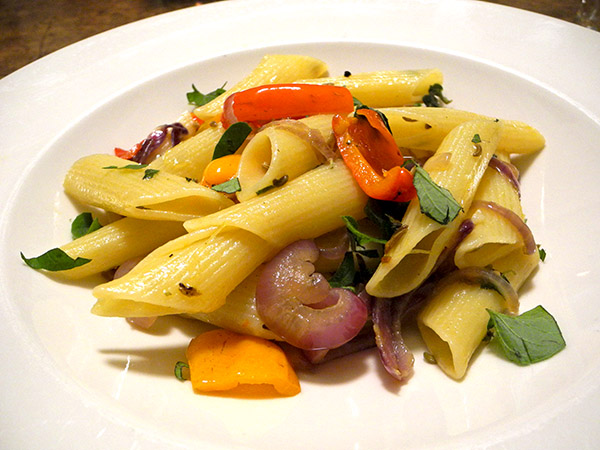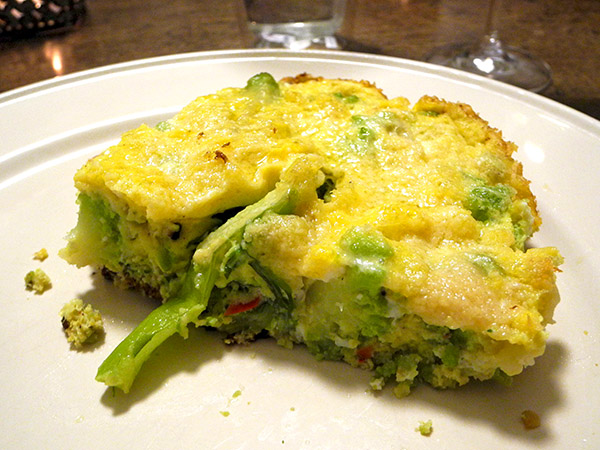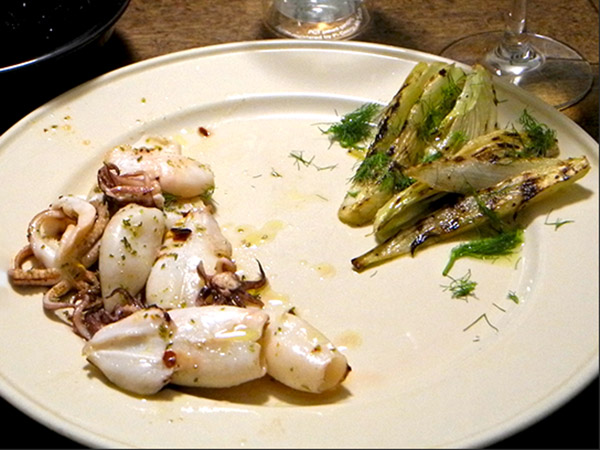It was the second time I had cooked this delicious simple dish, an adaptation of the one found on this site. The extraordinary complexity of flavors, considering the minimal list of ingredients, was still a surprise; it was just as good this time around, and just about impossible to be satisfied with just one serving. We didn’t have a cheese course.
-
two large cloves of garlic from Norwich Meadows Farm, sliced thinly, heated in a deep pan over medium-high flame, along with one finely-chopped not-so-hot Cayenne thin red pepper (with the seeds this time) from Oak Grove Plantation, until the garlic was almost starting to color, pieces of boned smoked eel from Blue Moon Fish Company added and tossed until warmed through, half of some savory pangrattato* prepared a little earlier mixed in and combined, the cooked and drained pasta (18 ounces of Setaro spaghetti chitarra from Buon Italia), added to the pan, tossed with the eel and pangratto and stirred over low heat for a couple of minutes, adding about a cup of the reserved pasta water while doing so, served in low bowls, where it was sprinkled with more pangratto and finished with ‘scissored’ chives (Goodness Garden, New Hampton, NY) from Union Market
*The preparation of the pangratto involved adding about a third of a cup of homemade breadcrumbs to about a fourth of a cup of olive oil in which two more thinly-sliced Norwich Meadows Farm garlic cloves and 3 anchovies from Buon Italia had been heated for a short while, stirring for 4-5 minutes, the mixture then drained on paper toweling and brought to room temperature
- the wine was an Italian (Sicily) white, Corvo Insolia 2013 from Philippe Wine in Chelsea, which is located about 50 yards from our front door
- the music was that of Germaine Tailleferre, Chamber Music & Piano Music, the only female member of the group of French composers known as ‘Les Six‘; the music is terrific, and her story is very much of the twentieth century
